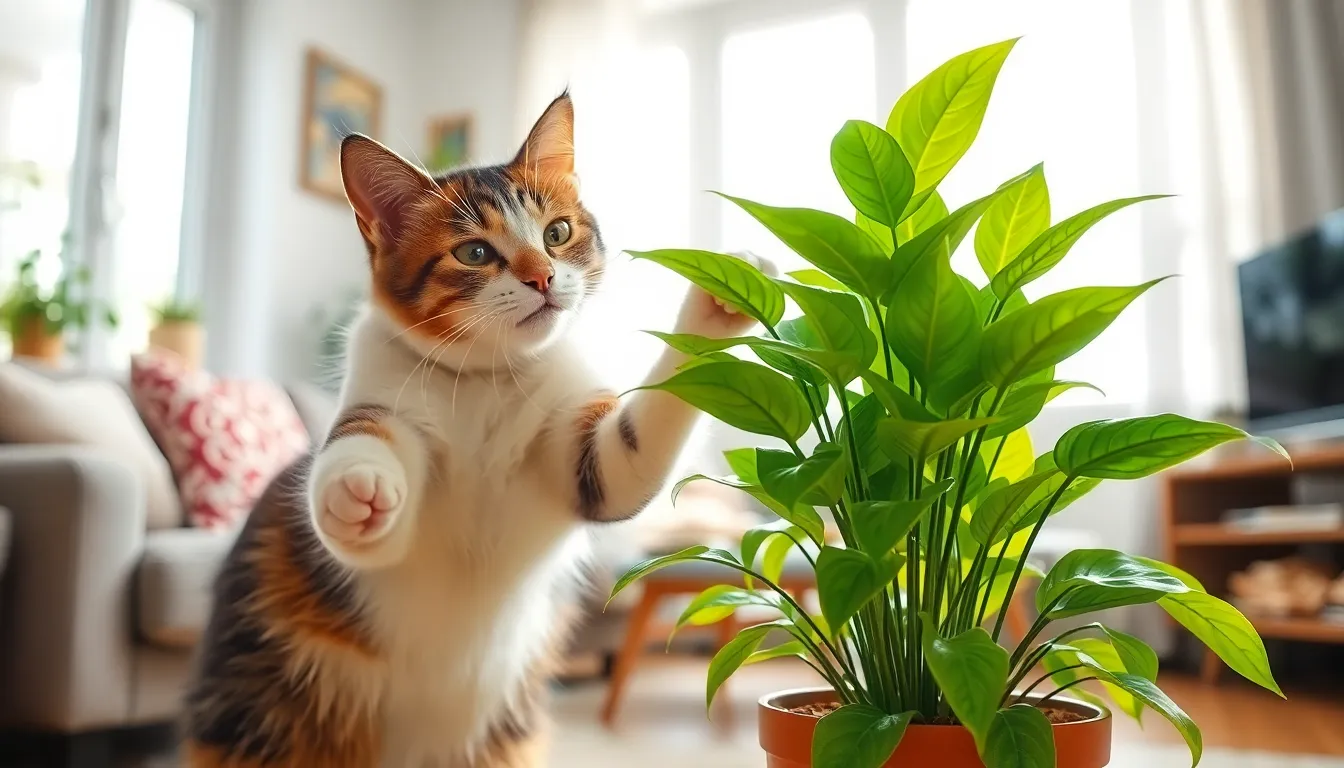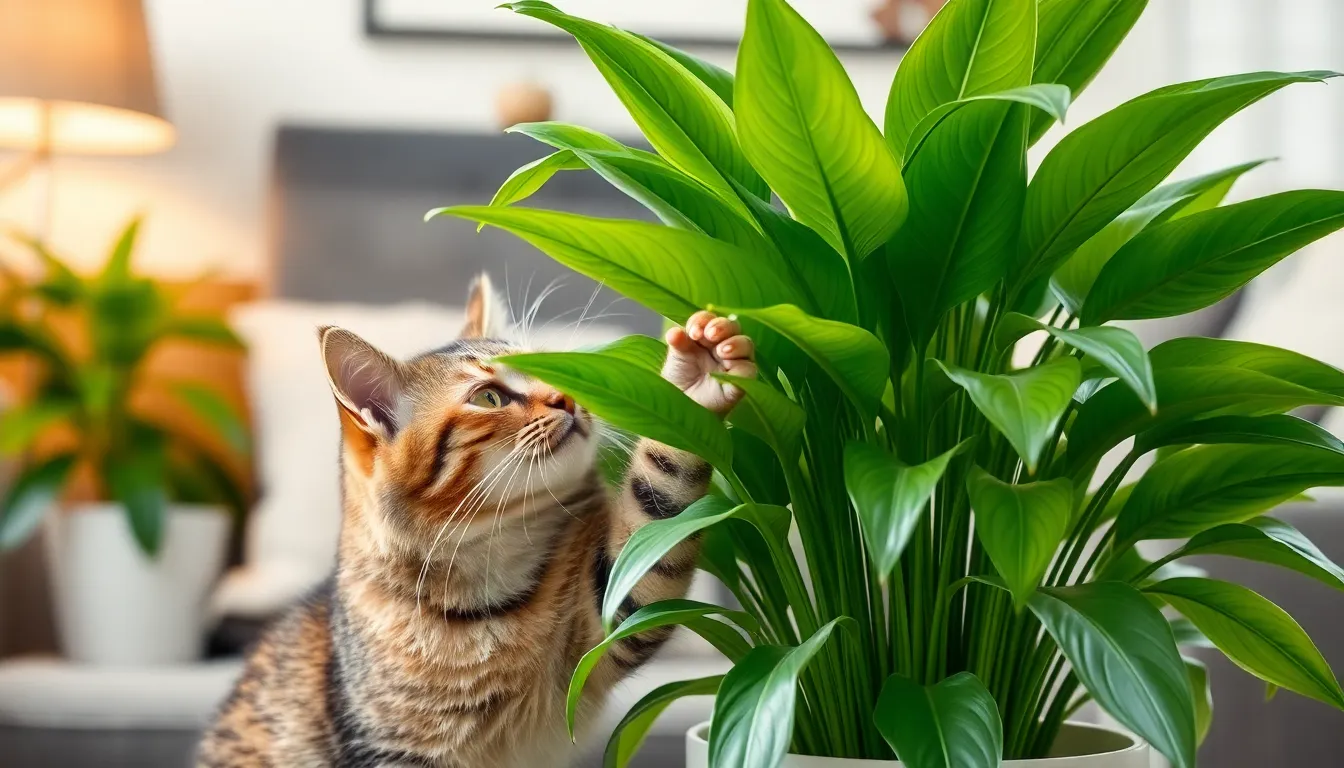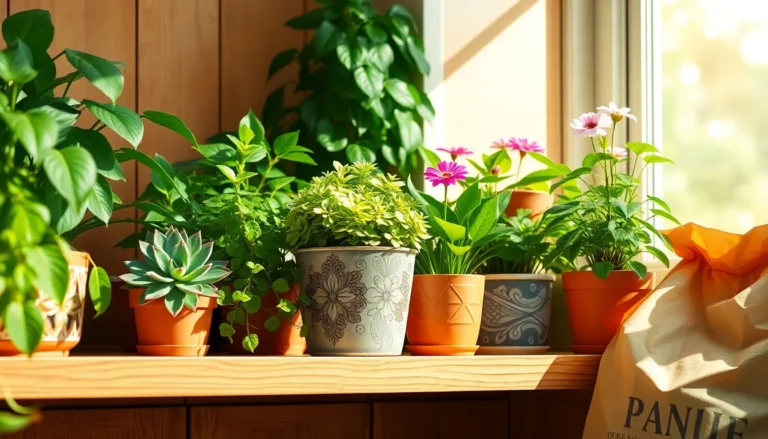Cats and houseplants often find themselves in a love-hate relationship. While your feline friend sees a lush fern as the perfect jungle gym, you see it as a cherished piece of decor. It’s a classic showdown: the adorable furball versus your prized greenery. But fear not! Keeping cats out of houseplants doesn’t have to be a battle of wills.
With a sprinkle of creativity and a dash of humor, you can reclaim your plants without sacrificing your cat’s happiness. From clever deterrents to alternative distractions, there are plenty of ways to keep those curious paws at bay. Get ready to transform your home into a cat-friendly zone where both your plants and your furry companion can thrive, minus the chaos. Let’s dive into some effective strategies that’ll have your plants standing tall and your cat purring with contentment.
How To Keep Cats Out of Houseplants
Cats possess a natural curiosity that often leads them to investigate indoor plants. Displacing soil, chewing leaves, or even using pots as litter boxes creates challenges for plant lovers. Houseplants can become irresistible playgrounds for cats, resulting in damage to both the plants and potential health risks for the pets.
Houseplants, particularly those with vibrant leaves, often attract cats due to their texture and movement. Cats tend to seek stimulation, and the interplay of light and shadows from plants piques their interest. If an indoor environment features multiple plants, it increases the likelihood of a cat becoming involved with them.
Certain behaviors, like digging in the soil or batting at leaves, may indicate boredom or anxiety in cats. Addressing these behavioral needs remains essential to prevent interference with houseplants. Enrichment activities, such as interactive toys or designated play areas, can redirect feline attention away from plants and toward more appropriate outlets.
Health concerns arise when cats consume toxic plants or ingest dirt and fertilizers. Many common houseplants, including lilies, philodendrons, and pothos, are harmful to cats. Ensuring a safe environment for pets must involve identifying and removing any toxic species from the home.
Understanding these factors empowers cat owners to create an environment that protects both their plants and pets. With effective strategies, it’s possible to minimize conflicts and cultivate a harmonious space.
Common Reasons Cats Love Houseplants


Cats often find houseplants irresistible for various reasons. Understanding these factors helps in ensuring that both pets and plants coexist peacefully.
Curiosity and Playfulness
Curiosity drives cats toward houseplants. Intriguing shapes and colors capture their attention. Playfulness comes into play as they swat at leaves or explore branches. Engaging with greenery offers an outlet for their natural hunting instincts. Additionally, observing plants move in response to their touch adds excitement. The stimulation plants provide serves as a source of entertainment and exploration.
The Appeal of Soil and Textures
Soft, rich soil attracts many cats. Digging in potted plants satisfies their instinctive behavior. Textures also pique their interest, encouraging interactive play. The contrast between leaves and soil proves enticing for curious felines. The mingling of scents from organic and earthy materials draws them closer. Textured surfaces create opportunities for sensory exploration and discovery.
Effective Strategies to Keep Cats Out
Cats’ natural curiosity presents challenges for plant owners. Implementing effective strategies can protect cherished greenery while keeping pets engaged.
Physical Barriers
Creating physical barriers often proves effective in keeping cats away from houseplants. Placing plants on high shelves prevents access and allows for safe growth. Using decorative plant stands can also elevate plants, deterring cats from exploring. For larger plants, securing them with mesh screens or baby gates restricts entry. Enclosing plants within cabinets or terrariums provides a safe environment. Adjusting the arrangement of furniture around plants may further limit access. These barriers not only safeguard plants but also enhance room aesthetics.
Using Deterrents
Cats typically respond to various deterrents. Citrus scents often repel them; spraying plants with a citrus-based solution may discourage their approach. Commercial cat repellents provide another option, combining natural ingredients that deter cats safely. Additionally, sprinkling cayenne pepper around pots can create an unpleasant experience for curious felines. Motion-activated devices that emit sounds or sprays can effectively startle cats, redirecting their attention. Choosing coffee grounds as a deterrent offers a safe alternative, reducing feline interest in the plants.
Choosing Cat-Safe Plants
Selecting cat-safe plants plays a significant role in maintaining a harmonious home. Non-toxic options, such as spider plants and Boston ferns, allow for enjoyment without harm. Cat grass serves as an appealing and safe alternative, satisfying cats’ cravings for greenery. Incorporating cat-friendly plants provides a distraction from harmful varieties. Avoiding toxic species, including lilies and philodendrons, protects cats from potential health risks. Understanding plant safety ensures a balanced environment for both cats and houseplants.
Training Your Cat
Training a cat involves understanding its behavior and using effective techniques. The following methods help create a balanced environment.
Positive Reinforcement Techniques
Positive reinforcement encourages desirable behavior through rewards. When a cat ignores houseplants, offer treats or praise immediately. Regularly reinforcing this behavior helps solidify the lesson. Maintaining consistency is key to effective training. Using interactive toys to redirect attention from plants can also enhance engagement. By creating a reward system, cats learn to associate good behavior with positive outcomes.
Establishing Boundaries
Establishing boundaries sets clear expectations for a cat’s behavior. Designate specific areas where plants can thrive safely. Using physical barriers, such as gates or shelves, effectively limits access. Placing plants in elevated locations prevents cats from reaching them easily. Implementing a “no” command when the cat approaches plants reinforces boundaries. Consistently redirecting cats to appropriate alternatives helps maintain these limits over time. A well-defined space contributes to a cat’s understanding of acceptable behavior.
Conclusion
Creating a harmonious space for both cats and houseplants is entirely achievable. By understanding cats’ natural behaviors and interests, owners can implement effective strategies to protect their plants while keeping their feline friends engaged. Utilizing barriers and deterrents not only safeguards greenery but also enriches a cat’s environment.
Choosing cat-safe plants and employing positive reinforcement techniques fosters a balanced atmosphere. With a little creativity and patience, it’s possible to cultivate a home where both pets and plants thrive. This approach ensures that everyone can enjoy the beauty of nature without compromising the well-being of beloved pets.




